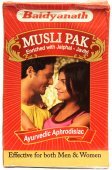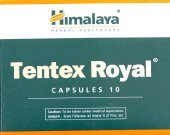Kokilaksha, Kokila-aksha, Kokilākṣa: 9 definitions
Introduction:
Kokilaksha means something in Hinduism, Sanskrit, biology. If you want to know the exact meaning, history, etymology or English translation of this term then check out the descriptions on this page. Add your comment or reference to a book if you want to contribute to this summary article.
The Sanskrit term Kokilākṣa can be transliterated into English as Kokilaksa or Kokilaksha, using the IAST transliteration scheme (?).
In Hinduism
Ayurveda (science of life)
Nighantu (Synonyms and Characteristics of Drugs and technical terms)
Source: WorldCat: Rāj nighaṇṭuKokilākṣa (कोकिलाक्ष) is the Sanskrit name for a medicinal plant identified with Astercantha longifolia Nees., a synonym of synonym of Hygrophila auriculata (Schumach.) Heine from the Acanthaceae or “acanthus” family of flowering plants, according to verse 4.191-193 of the 13th-century Raj Nighantu or Rājanighaṇṭu. Kokilākṣa is commonly known in Hindi as Tālmakhānā (Tālamakhānā); in Bengali as Kuliākhāra; in Marathi as Talimkhānā; in Gujarati as Elkhāro; in Telugu as Nirugubbi; and in Tamil as Nirmūllī.
Kokilākṣa is mentioned as having thirteen synonyms: Śṛgālī, Śṛṅkhalā, Raṇaka, Śṛṅgālaghaṇṭī, Vajrāsthiśṛṅkhalā, Vajrakaṇṭaka, Ikṣura, Kṣuraka, Vajra, Śṛṅkhalikā, Pikekṣaṇa, Picchilā and Ikṣugandhā.
Properties and characteristics: “Kokilākṣa is sweet, cold and cures the diarrhoea due to pitta-doṣa. It is aphrodisiac and anti-kapha. It gives strength, increases appetite and implitive (santarpaṇa)”.

Āyurveda (आयुर्वेद, ayurveda) is a branch of Indian science dealing with medicine, herbalism, taxology, anatomy, surgery, alchemy and related topics. Traditional practice of Āyurveda in ancient India dates back to at least the first millenium BC. Literature is commonly written in Sanskrit using various poetic metres.
Biology (plants and animals)
Source: Wisdom Library: Local Names of Plants and DrugsKokilaksha [कोकिलाक्षा] in the Sanskrit language is the name of a plant identified with Barleria longiflora L.f. from the Acanthaceae (Acanthus) family. For the possible medicinal usage of kokilaksha, you can check this page for potential sources and references, although be aware that any some or none of the side-effects may not be mentioned here, wether they be harmful or beneficial to health.
Kokilaksha [कोकिलाक्षा] in the Sanskrit language is the name of a plant identified with Artanema longifolium (L.) Vatke from the Linderniaceae (Lindernia) family having the following synonyms: Artanema sesamoides, Columnea longifolia.
Source: Google Books: CRC World Dictionary (Regional names)1) Kokilaksha in India is the name of a plant defined with Artanema sesamoides in various botanical sources. This page contains potential references in Ayurveda, modern medicine, and other folk traditions or local practices It has the synonym Artanema sesamoides Benth. (among others).
2) Kokilaksha is also identified with Hygrophila auriculata It has the synonym Asteracantha longifolia (L.) Nees (etc.).
Example references for further research on medicinal uses or toxicity (see latin names for full list):
· Natural history (1870)
· Journal of Palynology (1981)
· BioLlania (1997)
· Journal of the Linnean Society, Botany (1864)
· Species Plantarum (1753)
· Transactions of the Linnean Society of London (1825)
If you are looking for specific details regarding Kokilaksha, for example extract dosage, chemical composition, diet and recipes, pregnancy safety, health benefits, side effects, have a look at these references.

This sections includes definitions from the five kingdoms of living things: Animals, Plants, Fungi, Protists and Monera. It will include both the official binomial nomenclature (scientific names usually in Latin) as well as regional spellings and variants.
Languages of India and abroad
Sanskrit dictionary
Source: Cologne Digital Sanskrit Dictionaries: Shabda-Sagara Sanskrit-English DictionaryKokilākṣa (कोकिलाक्ष).—m.
(-kṣaḥ) A shrub: see the preceding. E. kokila, and akṣa the eye, or with kan added, kokilākṣaka.
Source: Cologne Digital Sanskrit Dictionaries: Monier-Williams Sanskrit-English DictionaryKokilākṣa (कोकिलाक्ष):—[from kokila] m. = lanayana, [Harṣacarita]
Source: Cologne Digital Sanskrit Dictionaries: Yates Sanskrit-English DictionaryKokilākṣa (कोकिलाक्ष):—(kṣaḥ) 1. m. Idem.
[Sanskrit to German]
Sanskrit, also spelled संस्कृतम् (saṃskṛtam), is an ancient language of India commonly seen as the grandmother of the Indo-European language family (even English!). Closely allied with Prakrit and Pali, Sanskrit is more exhaustive in both grammar and terms and has the most extensive collection of literature in the world, greatly surpassing its sister-languages Greek and Latin.
Kannada-English dictionary
Source: Alar: Kannada-English corpusKōkilākṣa (ಕೋಕಿಲಾಕ್ಷ):—[noun] the plant Hygrophila auriculata ( = H. spinosa, = Asteracantha longifolia) of Acanthaceae family.
Kannada is a Dravidian language (as opposed to the Indo-European language family) mainly spoken in the southwestern region of India.
See also (Relevant definitions)
Partial matches: Aksha, Kokila.
Starts with: Kokilakshah, Kokilakshaka.
Full-text (+8): Pikekshana, Kokilanayana, Ikshura, Kokilakshi, Ikshugandha, Srigalaghanti, Shrinkhala, Trikshura, Picchila, Vajrakantaka, Vajrasthishrinkhala, Shrinkhalika, Shringalaghanti, Vajra, Ranaka, Shrigali, Shuklapushpa, Kshuraka, Gokshura, Elkharo.
Relevant text
Search found 9 books and stories containing Kokilaksha, Kokila-aksha, Kokilākṣa, Kokilaksa, Kokila-akṣa, Kokila-aksa, Kōkilākṣa; (plurals include: Kokilakshas, akshas, Kokilākṣas, Kokilaksas, akṣas, aksas, Kōkilākṣas). You can also click to the full overview containing English textual excerpts. Below are direct links for the most relevant articles:
Rasa Jala Nidhi, vol 4: Iatrochemistry (by Bhudeb Mookerjee)
Part 48 - Treatment for chronic diarrhea (20): Vasudeva rasa < [Chapter III - Jvaratisara fever with diarrhoea]
Treatment for fever (143): Maharaja rasa < [Chapter II - Fever (jvara)]
Treatment for fever (152): Visama-jvara-hrid rasa < [Chapter II - Fever (jvara)]
Rasa Jala Nidhi, vol 3: Metals, Gems and other substances (by Bhudeb Mookerjee)
Part 2 - Purification of Lead < [Chapter VII - Metals (7): Sisaka (lead)]
Part 7 - Incineration of iron (26) < [Chapter IV - Metals (4): Lauha (iron)]
Rasa Jala Nidhi, vol 2: Minerals (uparasa) (by Bhudeb Mookerjee)
Part 4 - Process for creation of Dhanya-abhra (paddy mica) < [Chapter I - Uparasa (1): Abhra or Abhraka (mica)]
Part 3 - Incineration of haritala < [Chapter XII - Uparasa (13): Haritala (orpiment)]
The Agni Purana (by N. Gangadharan)
Sushruta Samhita, Volume 6: Uttara-tantra (by Kaviraj Kunja Lal Bhishagratna)
Chapter LVIII - Symptoms and Treatment of suppression of Urine (Mutra-ghata) < [Canto III - Kaya-chikitsa-tantra (internal medicine)]
Rasa Jala Nidhi, vol 5: Treatment of various afflictions (by Bhudeb Mookerjee)
Related products

